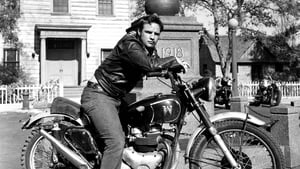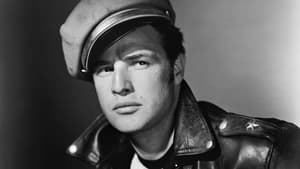Contact: [email protected]
Video Sources 0 Views

The Wild One Colorized 1953: Best Timeless Outlaw Biker Classic
Synopsis
[ez-toc]




Introduction
In the annals of American cinema, few films resonate as profoundly as the 1953 masterpiece, “The Wild One Colorized,” directed by the visionary László Benedek. Propelled by the rebellious charisma of Marlon Brando, this outlaw biker film stands as a pivotal moment in cinematic history. In this comprehensive exploration, we dive into the heart of “The Wild One Colorized,” not only dissecting its original making but also unraveling the enigma of its colorized 1953 version. From production challenges to character dynamics, cultural impact to enduring legacy, this article unveils the multifaceted allure of “The Wild One.”
Read Media File Transfer Agreement: Terms and Conditions
Read FAQ
The Making of “The Wild One Colorized”
As the gears of rebellion churned in the 1950s, “The Wild One Colorized” emerged from the crucible of American violence and motorcycle culture. Drawing inspiration from real-life incidents such as the Hollister riot and the Cyclists’ Raid, the film takes us into the heart of a biker club led by the enigmatic Johnny Strabler, played by Marlon Brando. The production was not without its challenges, navigating the complexities of portraying a motorcycle race, rival biker clubs, and the raw essence of rebellion on screen.
Bringing Characters to Life in Color
In the colorized rendition of “The Wild One Colorized,” we witness the iconic character of Johnny Strabler spring to life in vibrant hues. The rebel spirit personified, Johnny’s interactions with the townspeople and his complex connection with the police chief’s daughter add layers to the narrative. This section delves into the nuances of character portrayal and explores how the colorization process enhances the emotional depth of Johnny Strabler’s journey.
From Black and White to Color: The Art of Colorization
“The Wild One Colorized 1953” is more than just a visual spectacle – it is an artistic interpretation that breathes new life into a classic. Here, we unravel the meticulous process behind colorizing “The Wild One Colorized,” examining the delicate balance between preserving authenticity and infusing a modern vibrancy into the film. The transformation from black and white to color becomes a metaphorical journey, mirroring the evolution of rebellion itself.
The Cultural Impact of a Colorized Rebel
Transporting ourselves to small-town America in the 1950s, we explore the renewed cultural impact of “The Wild One Colorized” through its colorized lens. The clash of cultures, the portrayal of disaffected youth, and the overarching theme of rebellion resonate afresh. We dissect the film’s influence on 1950s counterculture, becoming a touchstone for a generation seeking to break free from societal norms.
Controversies and Criticisms: Debating the Colorization Debate
Colorization is not without its share of controversies, and “The Wild One Colorized” found itself at the center of the storm. The UK ban on colorized films, coupled with the inherent melodrama associated with such transformations, sparked debates on censorship and artistic integrity. This section dissects the arguments on both sides, questioning the impact of colorization on the original intent of classic black-and-white films.
The Enduring Legacy of “The Wild One Colorized”
Comparisons with contemporaries such as James Dean’s “Rebel Without a Cause,” Ursula Andress’s “Dr. No,” and Johnny O’Keefe’s rebellious persona highlight the enduring legacy of “The Wild One Colorized.” We delve into the ripple effect of Marlon Brando’s portrayal, shaping the future landscape of rebellious characters in cinema. “The Wild One Colorized” becomes not just a film but a cultural touchstone that reverberates through generations.
Reviving a Classic: The Reception of the Colorized Release
With the colorized version banned in the UK, we analyze the critical reception of “The Wild One” in its renewed form. A detailed movie review captures the essence of the colorized experience, juxtaposing it against the original black-and-white version. From the controversies surrounding its release to contemporary perspectives, we paint a comprehensive picture of how audiences embraced or rejected the colorized rendition.
Preserving Authenticity: Balancing Between Black and White and Color
The age-old debate between preserving the integrity of a film’s original black-and-white aesthetic and exploring new color interpretations takes center stage. As technology advances, the question of restoration becomes paramount. This section navigates through the delicate balancing act filmmakers face in preserving the authenticity of classic films while embracing the potential of color to breathe new life into cinematic treasures.
Conclusion
In the hands of László Benedek, “The Wild One” transcends the confines of a mere film. It becomes a canvas upon which rebellion is painted in bold strokes of black, white, and now, color. As we conclude our journey through the rebellious landscape of Johnny Strabler, Marlon Brando’s indelible influence, and the controversial colorization, we invite readers to rekindle their love for “The Wild One.” Whether experienced in its original black-and-white glory or through the prism of color, the enduring rebel spirit prevails. In the words of Benedek, the director who birthed this masterpiece, “Rebellion is as timeless as cinema itself.”














